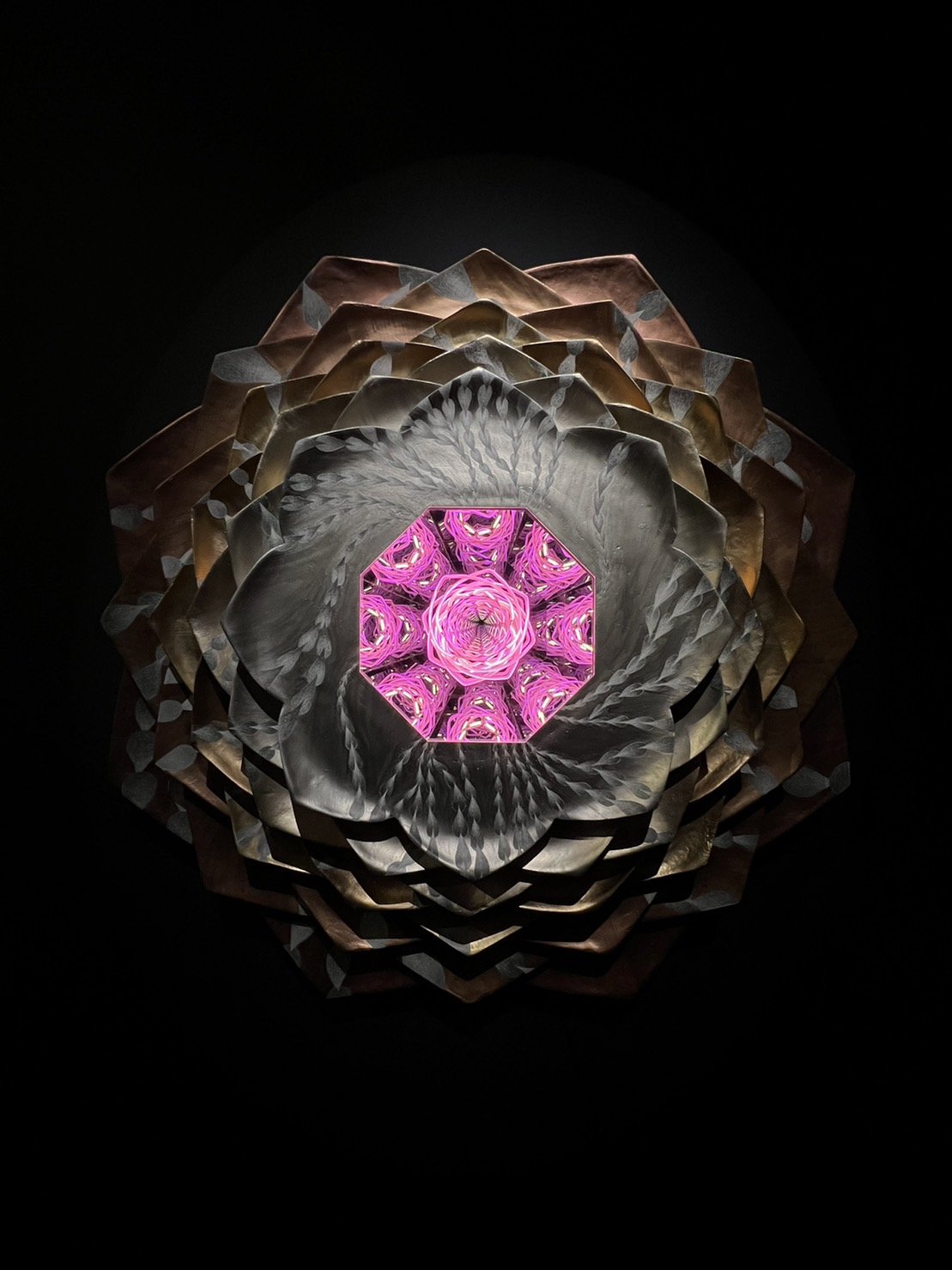Auspicious 88 - Lotus of Living & Dying
Graphite drawing on high density foam with epoxy, mirror, LEDs, acrylic mirror, aluminum, kinetic and audio components with micro computer.
120cm x 120cm x 32cmH
The lotus symbolizes purity and innocence, rising untainted from the mud to become a symbol of the birth of Buddhas and sacred life. In Hinduism, a lotus also emerges from the navel of Vishnu, representing the source of life.
The lotus installation artfully employs color and light to convey this concept. At its center, it's pink, embodying the softness and warmth of life, which gradually extends outward into gold, mirroring life's nobility and brilliance. The petals are painted with abstract symbols of life and death, radiating from the center. Each layer of petals independently rotates in different directions, representing the various stages and dynamics of life. While the lotus's emergence from the mud without stain represents life's purity and beauty, its eventual return to the earth in decay signifies rebirth and the completion of life's cycle. Only through experiencing life and death can the full circle of existence be realized.
《八十八吉祥之生與死的蓮花》
繪畫於高密度泡棉及環氧樹脂、鏡子、LED、鏡面壓克力、鋁、帶有微型電腦的動力和音訊組件。
120cm x 120cm x 32cmH
蓮花象徵著純潔與無垢,以其出淤泥而不染的特質,成為佛菩薩誕生與神聖生命的象徵。在印度教中,毗濕奴的肚臍也生長著蓮花,代表著生命創造的源頭。
蓮花的裝置巧妙地使用了顏色和光影來傳達這一意象。中心部分是粉紅色,如同生命的柔和與溫暖,而向外延伸變成金色,彷彿生命的尊貴與光輝。花瓣上面繪有生與死的抽象符號,從中心點散發,每層花瓣皆獨立地往不同方向旋轉,象徵生命的不同階段和動態。蓮花的出淤泥而不染,雖代表生命的純潔與美好,但最終在凋零後仍要回歸泥塵,方能重生。經歷生與死後,才是生命的完整循環。

